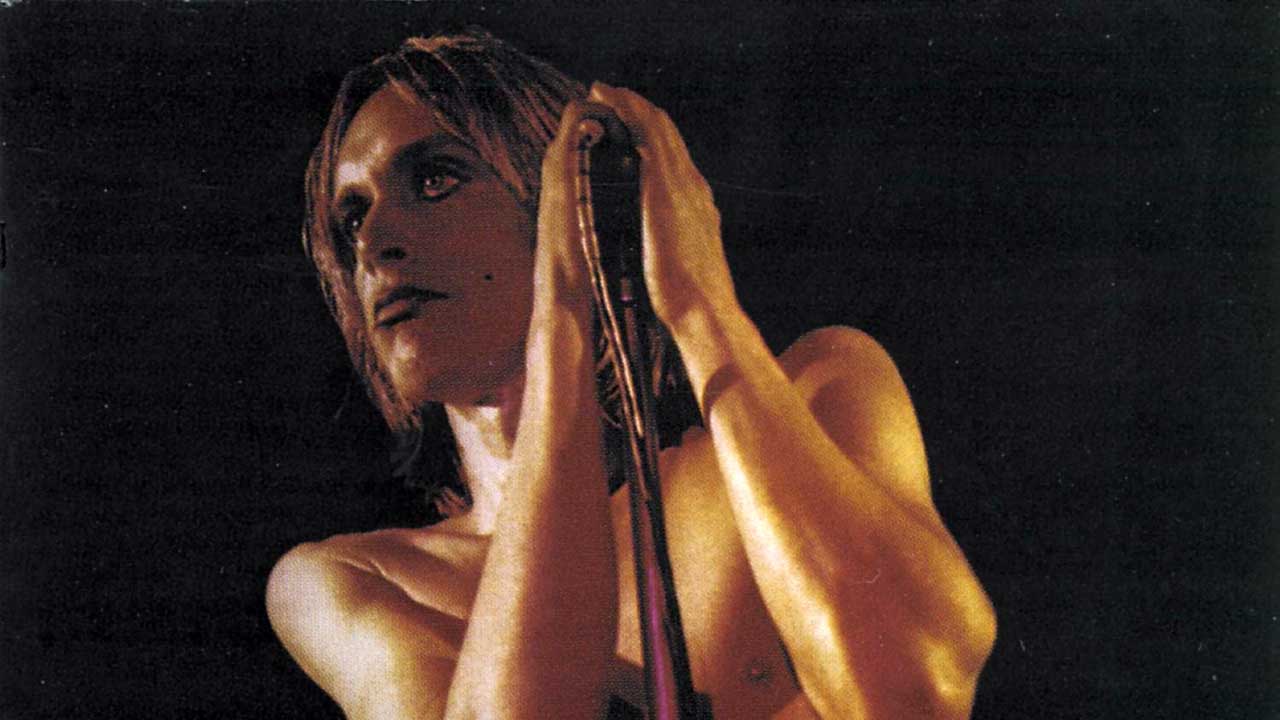Without the apparently limitless chutzpah of David Bowie, the broader musical landscape would be a significantly different place. Prior to Ziggy elevating Bowie to superstar status, he was already empire building. Luckily for posterity, he had both an eye for talent and an attractive compulsion to pay his dues.
Major influences on his transformation from parochial folky to pansexual glam star weren’t so much sidelined as celebrated. A stalled and desolate Mott The Hoople were seduced back into existence with Bowie song All The Young Dudes; Lou Reed’s tanking post-Velvets solo career was kicked back into life with a Transformer production job that birthed both Walk On The Wild Side and Perfect Day.
And then there was Iggy. By the time Bowie tracked him down to the notorious back bar of NYC’s Max’s Kansas City, Pop was living on little more than his wits and charisma. He’d already invented punk once, with the sullen brutality of the original Stooges, but after their second album Funhouse failed to ignite international markets, label Elektra bailed and the band duly dissolved.
Yet where music business bean counters saw only precarious investment, Bowie recognised true potential. He took Iggy and (final Stooges line-up guitarist/ co-writer/conspirator) James Williamson to London, engineered an album deal with CBS, and set about bringing in like-minded locals to complete an altogether more grounded and stable band line-up. At least that was the plan.
“We parachuted into the ground zero of glam,” James Williamson recalls. “We’d hang around at [Bowie manager] Tony DeFries’s office and see musicians that we thought might be suitable. We had people from the Pink Fairies, various different musicians, but that was the period of big hair and ruffled cuffs and it just wasn’t us.
"We’re two guys from Detroit, we don’t have that sensibility. I mean, we could barely tolerate Bowie’s band [laughs]. It turned out I became pretty good friends with Mick Ronson, but they were coming from a completely different world.”
And so it was that a call went out to Detroit, and original Stooges Ron and Scott Asheton rejoined the line-up of a band now subtly, but significantly, rebranded as Iggy And The Stooges.
The Ashetons were delighted to be back, but there was already an as yet largely unspoken bone of contention. For the first two Stooges albums, Ron Asheton had been the band’s guitarist, but now, with latterly recruited Williamson’s characteristic lead lines taking precedence, he’d been (in his mind atleast) demoted to bass.
“I get a bad rap for this, like I pushed Ron out,” says Williamson, “but I was the one who got him to come back. Ron was a bass player before he was a guitarist.”
Shaped by Pop and Williamson’s latest compositions, most significantly the defining fury of opening track Search And Destroy, the album – which would ultimately be titled Raw Power – was based on an intrinsically different Stooges sound, a sound within which Asheton’s guitar would have been surplus to requirements.
“At first Ron was delighted to have the job. We got on fine, later it ate at him. But with the style that I had evolved on Raw Power there’s no air for anybody else. The guitar is filling up everything.”
This component was a large part of the record’s magic. Across the entire album, a combination of pounding rhythm and searingly aggressive lead breaks finessed a style of guitar playing subsequently adopted by Sex Pistol Steve Jones and countless others. But nowhere was this enduring template for rock’s future more effectively, and appropriately, deployed than on Search And Destroy.
“Search And Destroy originated at RG Jones Studio in Wimbledon,” Williamson explains. “During a break in rehearsing, I started goofing around making machine gun sounds with the guitar, and it kind of clicked with me. Then back where we were living in Chelsea, I worked out the rest of the song around that.”
Lyrically, the song and its title had been inspired by a Time article on the Vietnam War. “Iggy’s a stream-of-consciousness writer,” says Williamson. “He’d been reading about Vietnam a lot in the papers, so with the machine-gun guitar it just came to mind. And it echoes his cheetah jacket.”
It’s a detail that defines the intrinsic duality of the song. For while Search And Destroy works as a composition essentially born of Vietnam-era angst, with a lyric packed with ‘firefights’, ‘nuclear A-bombs’ and ‘radiation’, ‘I’m a street-walking cheetah with a heart full of napalm’ works equally well as a pen portrait of Iggy’s notorious stage persona.
We’re left under no illusion that Search And Destroy’s central protagonist is an anonymous GI thousand-yard-staring into the Mekong Delta. The ‘world’s forgotten boy’ is, and always will be, Iggy Pop. And, as Williamson notes, should anyone have been left in any doubt, there’s Iggy on the album’s back cover pointedly flaunting his cheetah-emblazoned faux leather jacket.
The limitations of Bowie’s original Raw Power mix only accentuates Search And Destroy’s guitar-driven ferocity. “At first nobody in the band liked the mix, but the problem was he didn’t have a lot to work with,” Williamson admits. “Iggy’s concept of reflecting the band live wasn’t well executed, there wasn’t enough isolation, and leakage everywhere, so Bowie was in there trying to make sense of it.”
And he didn’t do badly. The Dark Side Of The Moon it isn’t, but as a template for punk it couldn’t be better. “That’s the best mix. The historical mix,” Williamson concludes. “Bringing the bass and drums down so you can’t hear them makes the lead guitar sound fantastic. Jack White made a career out of it.”

